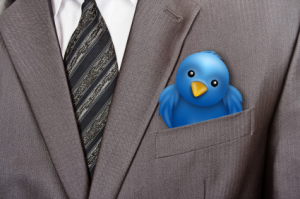Beyond Entertainment | Social Media as a Tool for Marketers
 From Fun to Big Business
From Fun to Big Business
Since its inception into the mainstream fabric of people’s lives, social media and the concept of social networking has gone through a rather peculiar evolutionary transition. Originally intended as an experiment in personal connections, Facebook has turned into a powerhouse platform that can be leveraged by just about any industry you can think of. From gaming, to advertising, to branding and marketing, there’s no online business plan that Facebook can’t be used for at this point.
Similarly, platforms like Twitter and Instagram have followed suit, finding any route possible for monetizing and giving companies, rather than solely the users, the incentive to hop aboard and use their technologies. It is now a standard with any new social network to be able to cater to both the consumer and the brand; the person and the product. Without that synergy, you no longer bring anything new to the table. And while most social startups always begin as someone’s passion project, sheer ambition can only take a budding entrepreneur so far before they realize they need capital to stay afloat. The capability for a social app to monetize is now the new standard – like it or not.
Pulse on the People
With more and more of today’s populace attached to their mobile devices during virtually every waking moment of their lives – let’s face it, even most corporate jobs require potential hires to have knowledge of social media simply because of how pervasive it is in our daily routine – social networks are becoming an increasingly valuable avenue for businesses to engage with their consumers.
It’s undeniable that social media has progressed beyond anyone’s original expectations, and what was once a subculture of upstart tech savvy nerds or young bratty kids looking to document silly, everyday mischief to share with their friends, has turned into the very definition of culture in the digital age. Everyone and their mother (literally) has adapted to the power of the Facebooks, Twitters, and Instagrams of the world. It’s a phenomenon that’s made corporate America stop, think, and open its eyes to a new approach. There’s a new way to reach the people, and it didn’t rest in the pockets of big name advertising companies with the latest campaign, but rather in the palms of the people typing their latest status update as they crossed a busy intersection.
It’s All in the Numbers
Like most facts of life, social media’s impact on branding and marketing could only be seen over time. As more companies realized the power of the social platform and took a chance; a leap of faith that ultimately resulted in unlocking the floodgates to a brand new flow of user engagement and consumer relationships.
A recent article and infographic put together by MediaBistro shows off a few rather telling stats and data points that provide an interesting insight into the ROI businesses can gain from putting their trust into social media. With over 25% of the total time Americans spend online dedicated to social networks and blogs, it’s no wonder that 71%, just about three quarters of all Internet users, are more likely to purchase a product from a brand they are following on a social media site like Twitter and Instagram. While 63% of local users on social networks are more likely to use a business or develop brand loyalty to a product or service that has its info on a social media site.
The reason for these staggering figures is because Facebook, Twitter, Instagram, and any other similar platform allows for a new standard in user engagement. It lets the consumer directly interact with the brands they “follow,” “like,” or “favorite,” giving the option to communicate with brand accounts, pages, and spokespeople. Whether those correspondences are negative or positive it matters not. This is a way to get in touch with the people and vice versa that never existed prior to the social media revolution. It makes people feel involved. They finally have a say, and everyone else be damned if they’re not going to put it to good use. It’s a feeling of reassurance when consumers know they can get pull together as a collective voice and leverage that clout to let a corporation know what they’re feeling. It’s the David and Goliath story, but digitized – and in this version, both sides win.
In Conclusion…
If the above is any indication, then social media has officially become the right arm of branding and advertising companies the world over to connect with their consumer bases; a practice that will only gain more steam as time goes on. Social networking platforms will continue to innovate, and the strategies companies employ to hang on to their newfound grasp on the general public will adapt with a careful fluidity. It’s a pattern that giant corporate titans will use to feign equal footing with the little guy, (read: the buying public) and while this may seem like a ploy to maximize ROI and cut overhead costs for marketing and suck the people into their agenda, it all makes sense. The road to consumer engagement goes both ways and while it allows “the man” to get into the minds of the people, it also gives the general public a platform to speak out about their gripes and make their presence known. It’s a beautiful symbiotic relationship that will no doubt become more complex as time goes on. And we’re all the better for it.








